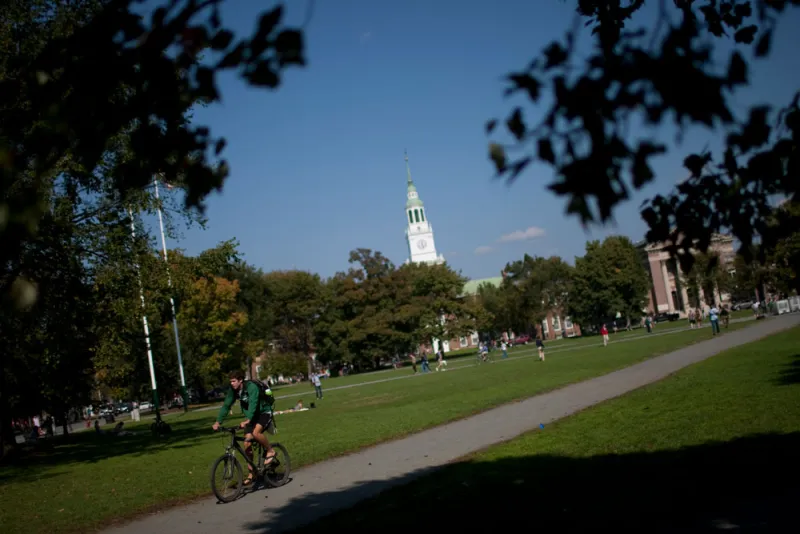A simple portfolio of 60 percent U.S. stocks and 40 percent U.S. bonds — know as a 60-40 — would have delivered almost 10 percent in fiscal 2019.
But the average Ivy League endowment, which have portfolios filled with public and private investments sourced from around the world, only racked up a 6.7 percent return for the 12 months ending June 30.
The Ivies ended their two-year streak of beating a 60-40, according to research firm Markov Processes International. MPI calculated the 9.9 percent return on a domestic 60-40 portfolio using the S&P 500 index and Bloomberg Barclays U.S. aggregate bond index, rebalanced quarterly.
According to an analysis by MPI, the average Ivy League endowment lagged a 60-40 portfolio five times in the last 16 years.
Brown University was the only Ivy to beat this benchmark, and did so by a huge margin. Brown returned 12.4 percent for fiscal year. Yale, run by David Swensen, had its third rough year, returning 5.7 percent, while Cornell generated 5.3 percent and Columbia was on the bottom with 3.8 percent.
But the endowments’ results should be viewed in the context of an unusual fiscal year for public markets, MPI noted. Last year ended with a dramatic downturn in equities, only to be followed by a surprising rally in 2019. At the same time, Wall Street’s expectations for a rise in interest rates went in the opposite direction, bolstering the value of fixed income securities. According to MPI, the performance of a domestic 60-40 portfolio in the first quarter of 2019 was its best in a decade.
No wonder the simple portfolio triumphed. Endowment chiefs, like most institutional investors, have been anticipating an end to the long bull market and have likely been turning to various portfolio protection strategies.
“Variations from benchmarks and increased allocations to risk-mitigation strategies, like hedge funds rather than, say, Treasuries, or reallocating domestic equity exposure to lower valuation segments of the global stock market, namely foreign developed and emerging markets stocks, would have challenged performance relative to a passive 60-40 portfolio,” according to MPI’s new report.
MPI’s analysis finds that over the longer term, the sophisticated endowment model slightly underperformed a 60-40 investment strategy. The average Ivy returned 10.3 percent annualized over the last decade, versus 10.5 percent for a 40-60. Dartmouth tied the passive portfolio, whereas Princeton and Yale beat it with 11.6 and 11.1 percent annualized returns, respectively.
But those gains came with substantial risks. Many “argue that the Yale model of active management, private market exposures, absolute return strategies, and high fees is outdated, especially when we factor in the potential risk involved in achieving such gains,” reported MPI.
[II Deep Dive: David Swensen Is Great for Yale. Is He Horrible for Investing?]
There are gaps between the Ivy League endowments’ actual returns and what MPI expected.
According to MPI’s previous analysis, the average Ivy League endowment was expected to generate estimated returns of 8.7 percent for fiscal year 2019, underperforming the 60-40 portfolio’s return. Large endowments, or those with more than $1 billion in assets, were estimated to have returned 7.2 percent. The average medium endowment was expected to deliver 6.3 percent, while small endowments with $101 million to $500 million in assets earned an estimated 6 percent return.
MPI estimated 2019 fiscal year returns using 2018 performance data from the National Association of College and Business Officers and an analysis of 2018 asset class exposures of endowments produced for Institutional Investor.
“The Ivy average was 2 percent or 200 basis points below our FY2019 projection of 8.7 percent. Select individual schools, which can have an even greater margin of error given portfolio idiosyncrasies, underperformed expectations by an even wider margin. For example, our 10.1 percent estimate for Yale was well over and above the university’s uninspired 5.7 percent result,” according to MPI’s report published Monday.
It’s highly likely that endowments chiefs have made tactical and strategic shifts to their portfolios given the historic length of the economic expansion and market runup.







